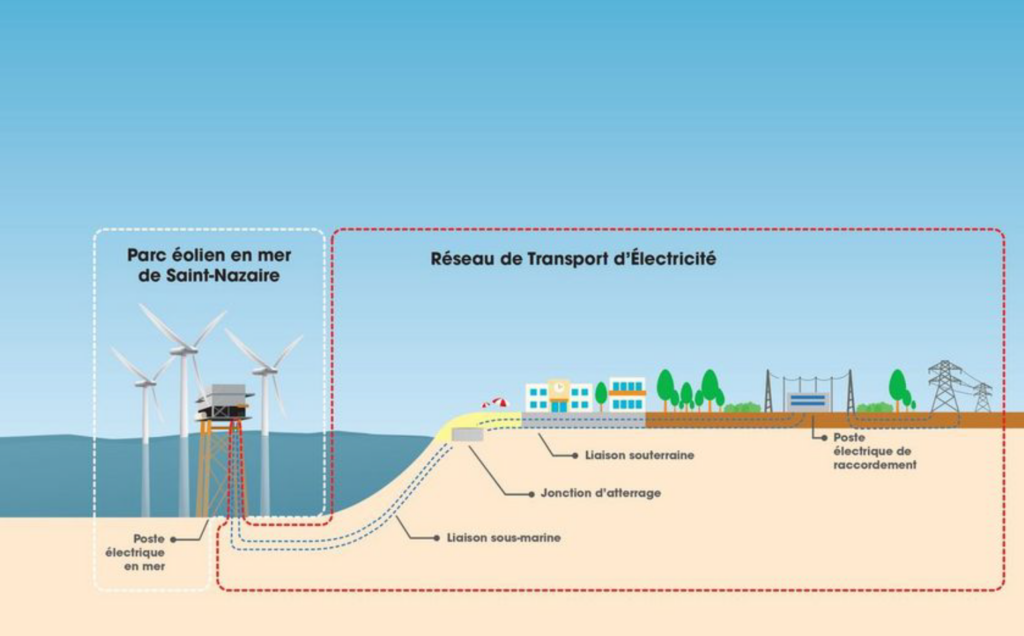

Engineers, like myself, love calcs on the back of a fag packet, or on the back of an envelope in these days when engineers hardly smoke anymore. They also love crossing T’s and dotting I’s, making sure technical endeavors end up complete, refusing to turn a blind eye on inconvenient facts.
Consider all-out electrification, at the top of the to-do-list of the powers that be. As present installed power generation capacity does not sit idle, rather is under constant pressure to deliver. It should be obvious that future electrification of new sectors has to come with additional power capacity, renewable by construction as this whole grand plan aims to achieve net zero emissions by 2050.
Consider the electrification of the car pool, soon to be cast in regulative concrete, with a sales ban of internal combustion engine vehicles in 2035 in the EU. In France, models show that gradual market share pick-up of electric vehicles (EV) should not put undue pressure on the grid. Still, this additional electricity demand will have to be supplied from renewable sources. In a country graced by a long coastline and some social reticence to install on-shore generators, the most promising source of renewable electricity is offshore wind.
The potential of offshore wind electricity generation is estimated at 30 GW, some 22% of the present total installed electricity generation. Coincidence: the electrification of the 39 million car pool would require the addition of 21% of this same installed capacity. A = B. Regardless of the other demands, like in industry or heating and cooling, one could oversimplify the equation, another thing that engineers love to do. The electrification of the car pool can be met by the potential of offshore wind power generation.
Assuming the power generation itself is competitive in terms of production cost, remains the cost of the connection to the grid. Something often kept quiet in the numerous studies about renewable electricity generation (refer to inconvenient facts). Fortunately, the Electricity Network Authority, a public entity, has to disclose this cost of connection. For the 480 MW, 80 generators-strong, offshore field off the coast of Saint Nazaire, in the Atlantic Ocean bordering Brittany, the connection investment was 280 M€ in 2022. Similar amounts are earmarked this year for the new wind generator complexes under construction in the Channel, off the coast of Saint-Brieuc and Fécamp.

Source: Electricity Network Authority
A quick and nasty calculation puts the cost of connection for the whole potential of offshore wind electricity generation (30 GW) at close to 17.5 B€, over-simplified at 500 € per EV. On top of the cost to build the recharging infrastructure for electromobility and the storage of the electrons made necessary by the intermittency of wind, even off the coast. All of the above funded by taxpayer’s money, as the Electricity Network Authority is neither a charity, nor a philanthropic society. The tax burden in France is one of the heaviest in the West and will only grow further with so many additional needs popping up regarding our sustainable future, like this one.
Anyone available to prioritize the use of public funds, ideology-free in his or her mind, using such concepts as level-playing field, economic efficiency, cradle-to-grave CO2 emission reduction or Life Cycle Analysis?
It may well be part of the price we have to pay to gracefully exit from the three centuries of Anthropocene. At least we should be aware of it when we are eventually faced with the pros and cons of our way of life and have to make difficult decisions about what to jettison to stay sustainably on board of Ship Earth.
Philippe Marchand is a Bioenergy Steering Committee Member of the European Technology and Innovation Platform (ETIP).